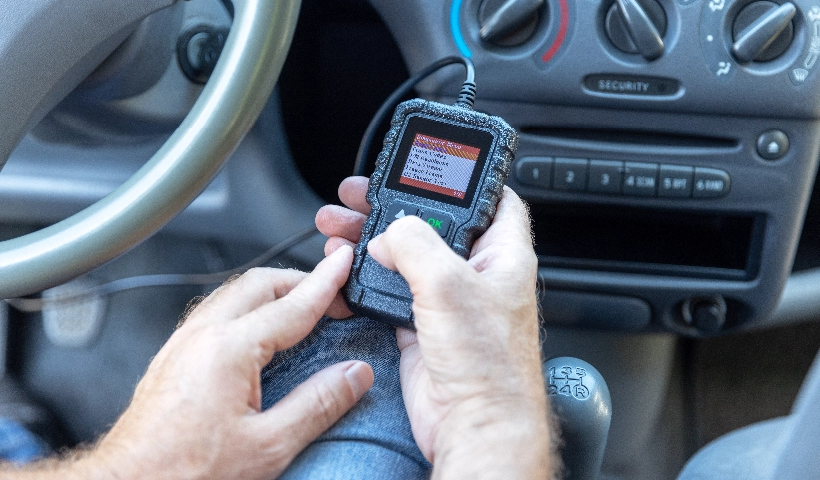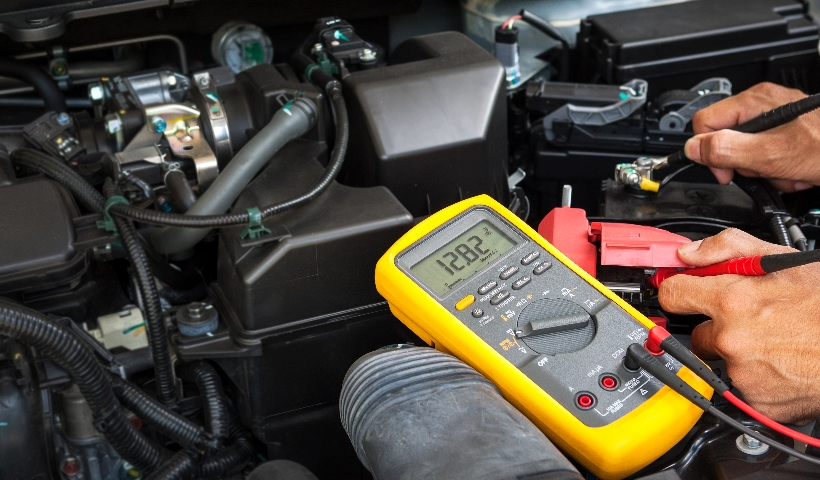Peace of Mind. Integrity. High Standards. Attention to Detail: That’s the Hale’s Commitment
Today’s vehicles have tons of electronics, including computers and sensors for the engine, transmission and brakes. While these components make a vehicle safer, they also make it more difficult to diagnose. Hale’s Automotive has state-of-the-art diagnostic equipment to track down the problem, whether it is in the engine, transmission or ABS.

Every vehicle manufactured in the United States after 1996 must have OBD-II. This system is the onboard diagnostics that helps auto technicians locate the problem with the ignition and emissions systems. If the electronic control module also contains the instructions for the transmission and brakes, these codes can also show up as a check engine light. In many cases, vehicles have separate computers for the ABS and transmission systems.
The vehicle’s sensors continuously monitor several factors, from the engine’s temperature to the tire pressure. They send data to the electronic control module (ECM). If the ECM sees data that is out of range, it uses other sensors and circuits to adjust the air and fuel mixture. If the readings are still out of range, the ECM stores a trouble code and illuminates the check engine light.
Auto techs use OBD-II scanners to pull the codes via the vehicle’s OBD-II port. However, pulling a code is only the beginning of diagnosing a problem. In many cases, a trouble code only tells you which sensor sent out-of-range readings. For example, if the oxygen sensor stores a code, it could mean the oxygen sensor is bad, the wiring to the oxygen sensor is bad, the oxygen sensor heater has a problem (though this is often a separate code), or the exhaust has too much or too little unburned gas in it.
The techs at Hale’s Automotive on North Court Street in Marion, IL, use other diagnostic equipment to track down the problem so they can repair it.
In addition to the code scanner, we use several other pieces of equipment to help diagnose vehicles, including:

Scan Tools
These advanced diagnostic devices provide our technicians with vehicle-specific software, real-time data graphs, and bi-directional control. They allow our techs to perform system programming, component activation, and various diagnostic tests.

Multimeters
These versatile tools allow us to measure current, resistance and voltage. They can help us diagnose several problems, including issues with the electronic control module, the ignition system, the lighting system, and the charging system.

These advanced diagnostic tools allow our techs to visualize real-time waveforms to help diagnose complex sensor issues and electrical problems.
When there are several shops and dealerships around, there are several reasons you should choose Hale’s Automotive for diagnostics:
EXPERTISE
Our experienced and certified technicians have many years of working with diagnostic equipment, interpreting the results and tracking down even the most elusive problem. They are fully knowledgeable in the operation of advanced equipment required to accurately diagnose today’s vehicles.
ADVANCED EQUIPMENT
Vehicle tech changes frequently, which means our diagnostic equipment must also change. Hale’s Automotive keeps up with the newest tech by purchasing software upgrades. When upgrades are no longer available or new technology requires a different piece of diagnostic equipment, we make sure our technicians have it so they can quickly and accurately diagnose vehicle problems.
Access to Manufacturer-Specific Data
Many of our professional diagnostic tools are equipped with manufacturer-specific databases and software. This allows us to work on vehicles from many different manufacturers, whether domestic, Asian, gas-powered, diesel-powered, semis or other vehicles.
Once we diagnose the problem, we can let you know what it is. With your OK, we will start the repair and let you know when it’s completed. As always, we also let you know if we run into a delay and won’t have your vehicle finished when we promised.



